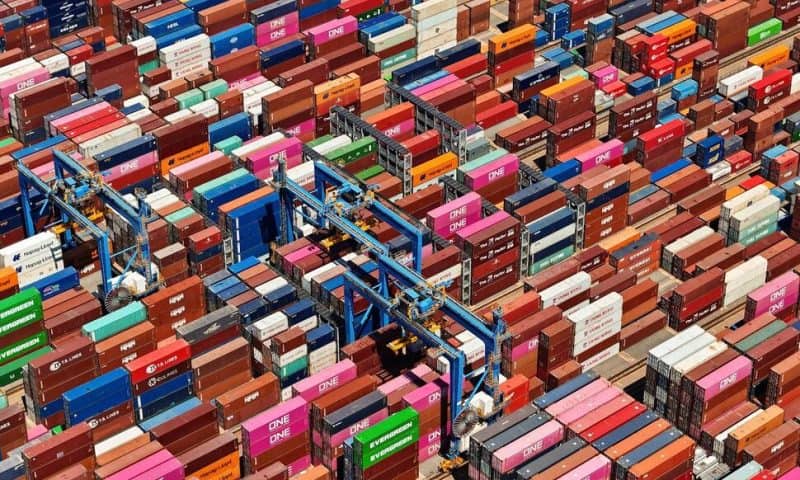China’s exports for May grew at their fastest pace in more than a year despite trade tensions, though imports fell short of analyst expectations, according to customs data released Friday
HONG KONG — China’s exports in May grew at their fastest pace in more than a year despite trade tensions, though imports fell short of analyst expectations, according to customs data released Friday.
Exports jumped 7.6% in May from the same month last year to $302.35 billion, rising at the fastest pace since April 2023. Imports rose by 1.8% to $219.73 billion, missing estimates of about 4% growth.
The uptick in exports is also partly due to a lower base in the same period last year, when exports declined 7.5%.
In comparison, exports grew by 1.5% in April compared to the same period last year while April imports rose by 8.4%.
The strong exports caused China’s trade surplus to widen to $82.62 billion, up from April’s $72.35 billion.
The growth in exports comes as China faces escalated trade tensions with the U.S. and Europe. The U.S. is ramping up tariffs on Chinese-made electric cars while Europe is considering levying similar tariffs.
“Foreign tariffs are unlikely to immediately threaten exports; if anything, they may boost exports at the margin as firms speed up shipments to front-run the duties.” said Zichun Huang of Capital Economics in a note.
Huang also said that exports would be supported by a weaker real effective exchange rate.
“Import volumes were little changed last month, but they will probably rise soon, with increased government spending supporting the import-intensive construction sector,” she said.
Factory activity in China slowed more than expected in May, according to an official survey released last week.
The manufacturing purchasing managers index from the China Federation of Logistics and Purchasing fell to 49.5 from 50.4 in April on a scale up to 100 where 50 marks the break between expansion and contraction.
China has struggled to bounce back after the COVID-19 pandemic, as it grapples with weaker demand globally after the U.S. Federal Reserve and other central banks raised interest rates to counter inflation. A slump in China’s property sector also is weighing on growth.
China has set a target of around 5% for economic growth this year, an ambition that will require more policy support, economists say.

